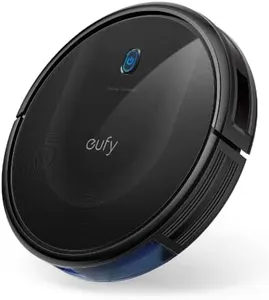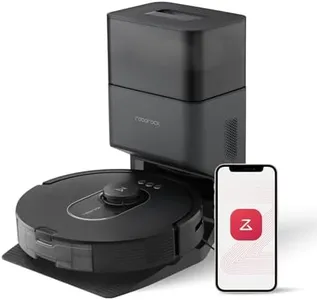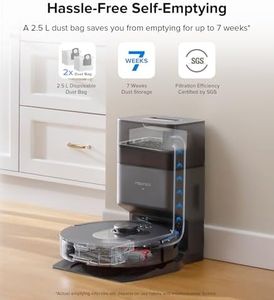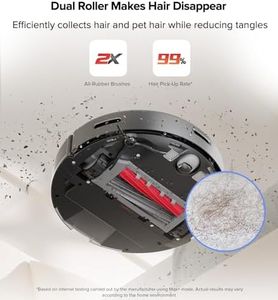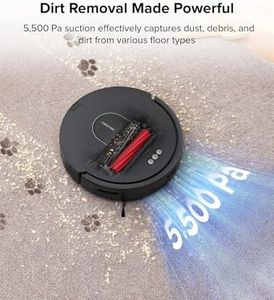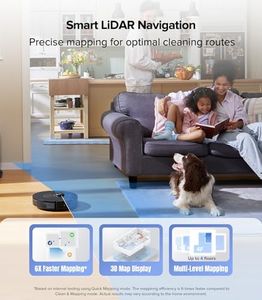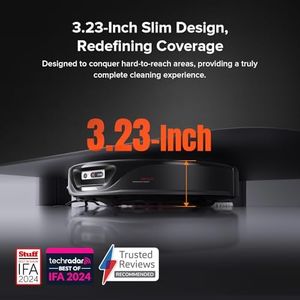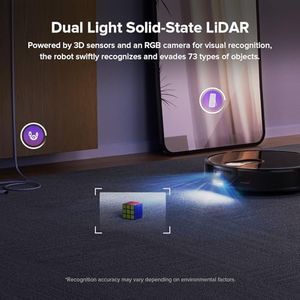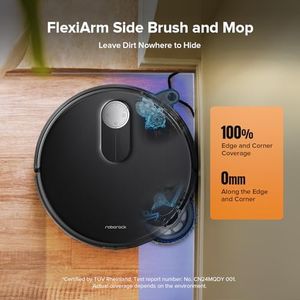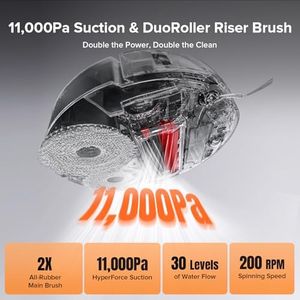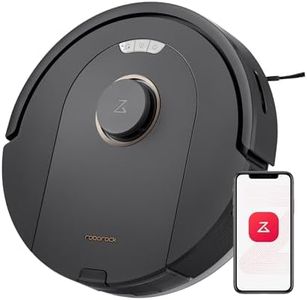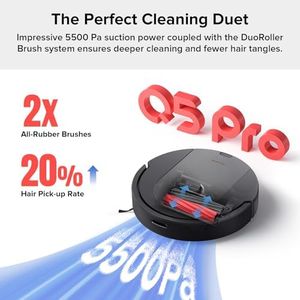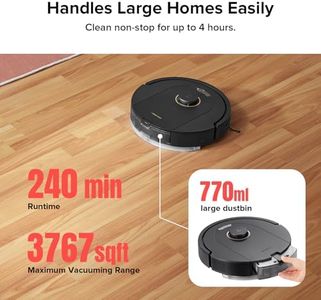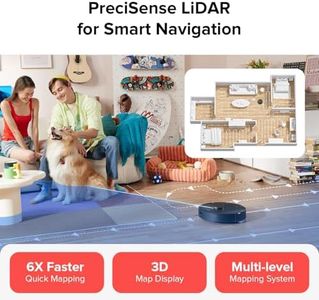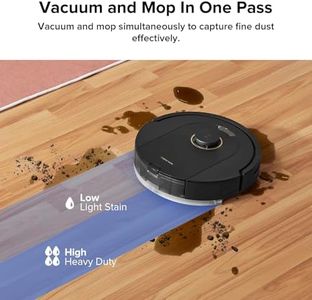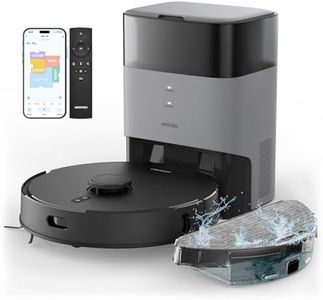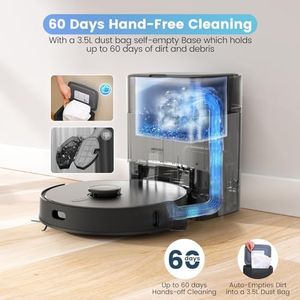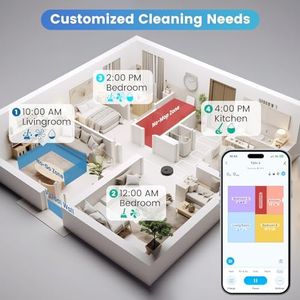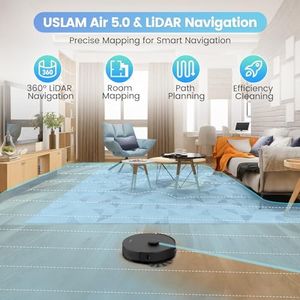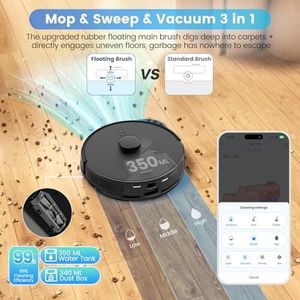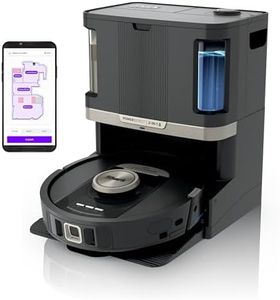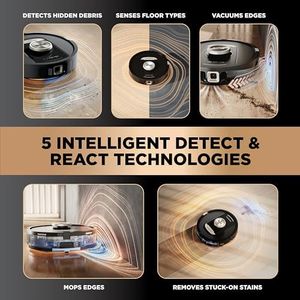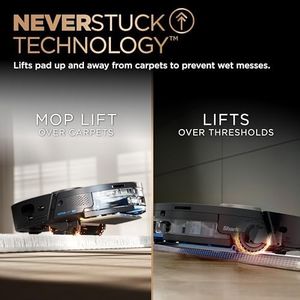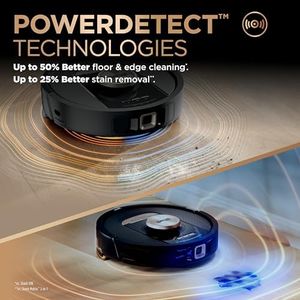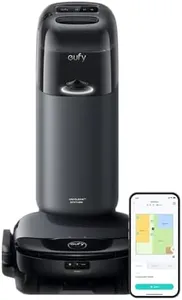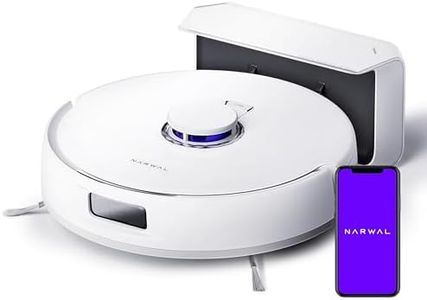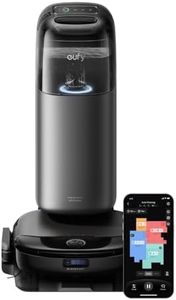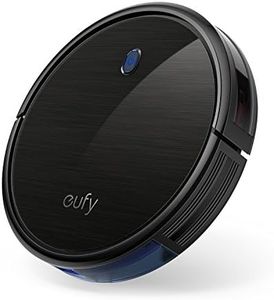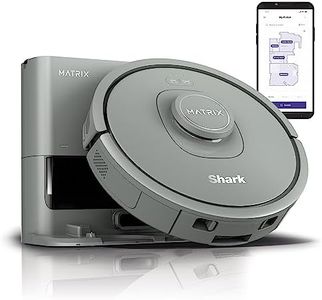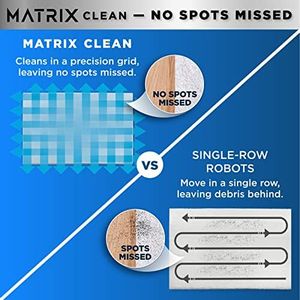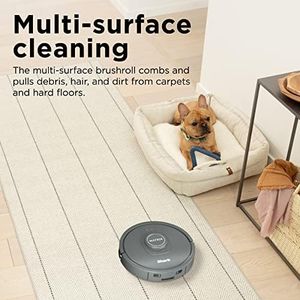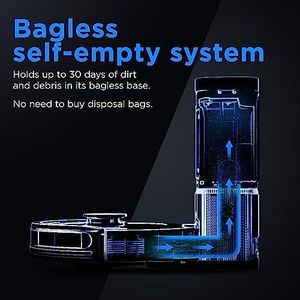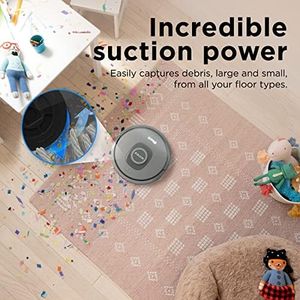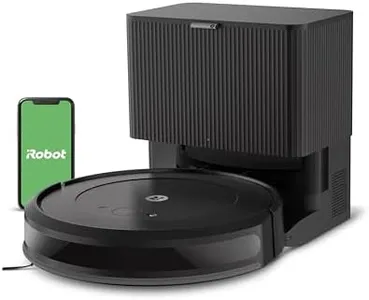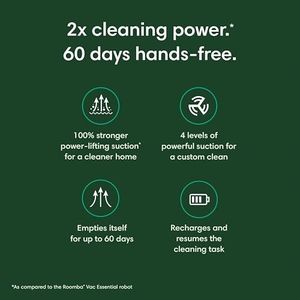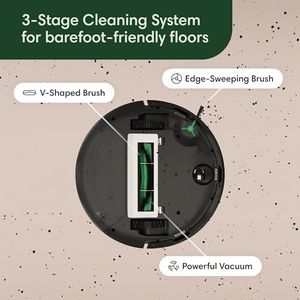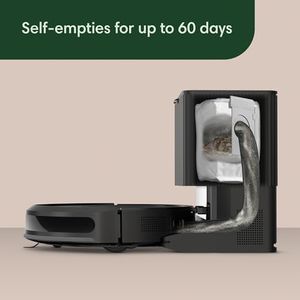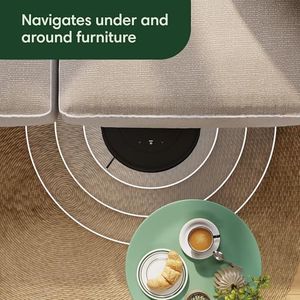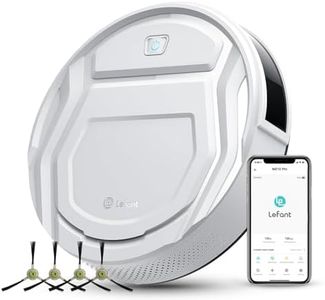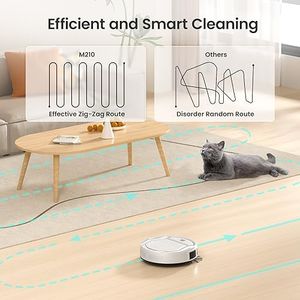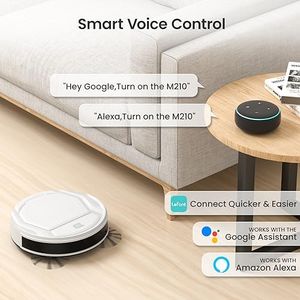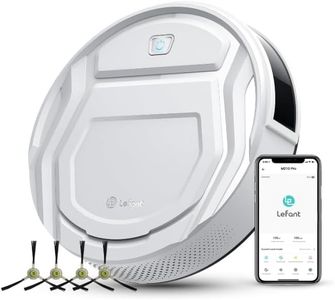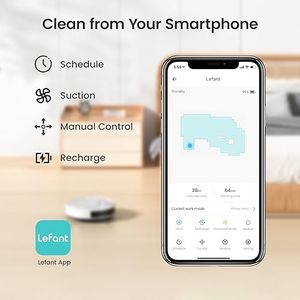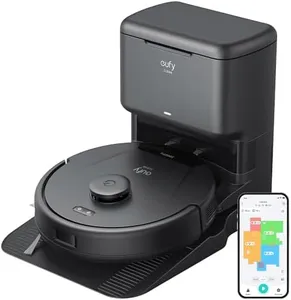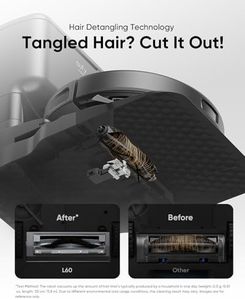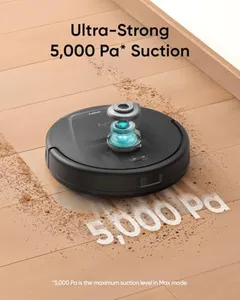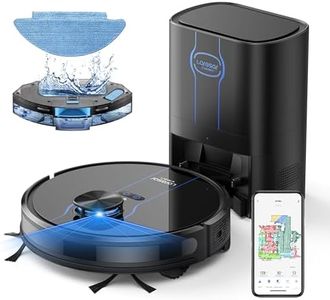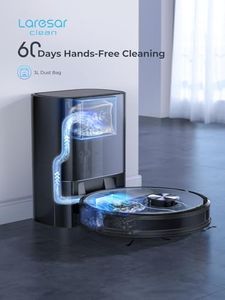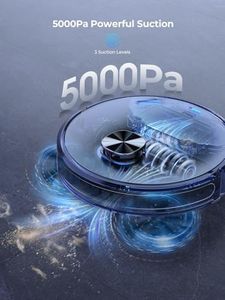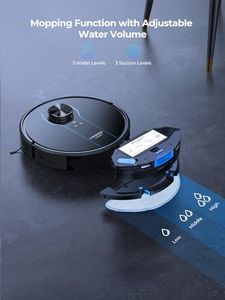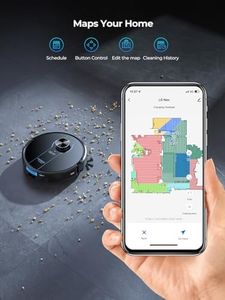We Use CookiesWe use cookies to enhance the security, performance,
functionality and for analytical and promotional activities. By continuing to browse this site you
are agreeing to our privacy policy
10 Best Budget Robotic Vacuums
From leading brands and best sellers available on the web.Top 10 Best Budget Robotic Vacuums 2025 in Canada
#1
Winner
roborock Q5 Max+ Robot Vacuum with Self-Empty Dock, Upgraded from Q5+, 5500 Pa Suction, DuoRoller Brush, Hands-Free Cleaning for Up to 7 Weeks, PreciSense LiDAR Navigation, App & Voice Control
roborock Q5 Max+ Robot Vacuum with Self-Empty Dock, Upgraded from Q5+, 5500 Pa Suction, DuoRoller Brush, Hands-Free Cleaning for Up to 7 Weeks, PreciSense LiDAR Navigation, App & Voice Control
Suction Power: 5500 Pa
Battery Life: 4 hours
Navigation System: PreciSense LiDAR Navigation
Dustbin Capacity: 770 ml
Height and Size: 36.7L x 49W x 38.3H cm, 11.2 kg
Control Options: App, Button, Voice Control
Chosen by 1362 this week
roborock Qrevo Slim Robot Vacuum and Mop, Self-Emptying, Self-Refilling, Auto Mop Washing, Auto-Drying, Auto Mop Lifting, Dual Spinning Mops, 3D ToF Obstacle Avoidance, 11,000Pa Suction, Black
roborock Qrevo Slim Robot Vacuum and Mop, Self-Emptying, Self-Refilling, Auto Mop Washing, Auto-Drying, Auto Mop Lifting, Dual Spinning Mops, 3D ToF Obstacle Avoidance, 11,000Pa Suction, Black
Suction Power: 11,000Pa
Battery Life: 180 minutes
Navigation System: 3D LiDAR and RGB camera
Dustbin Capacity: Holds dirt up to 7 weeks
Height and Size: 35L x 48.7W x 52.1H cm
Control Options: App, Button, Voice Control
roborock Q5 Pro Robot Vacuum and Mop Combo, DuoRoller Brush, 5500Pa Suction, LiDAR Navigation, Robotic Vacuum Cleaner with 770ml Large Dustbin, 240 min Runtime, Smart No-Go Zone, Perfect for Pet Hair
roborock Q5 Pro Robot Vacuum and Mop Combo, DuoRoller Brush, 5500Pa Suction, LiDAR Navigation, Robotic Vacuum Cleaner with 770ml Large Dustbin, 240 min Runtime, Smart No-Go Zone, Perfect for Pet Hair
Suction Power: 5500 Pa
Battery Life: 240 minutes
Navigation System: PreciSense LiDAR Navigation
Dustbin Capacity: 770 ml
Height and Size: 35.3L x 35.1W x 9.7H cm
Control Options: App, Button, Voice Control
AIRROBO Robot Vacuums and Mop Combo, Self-Emptying, 60-Day Capacity, Home Mapping, Schedule, Wi-Fi/App/Alexa/Remote, 180mins Runtime, T20+ Robotic Vacuum Cleaner for Pet, Hard Floors, Carpet
AIRROBO Robot Vacuums and Mop Combo, Self-Emptying, 60-Day Capacity, Home Mapping, Schedule, Wi-Fi/App/Alexa/Remote, 180mins Runtime, T20+ Robotic Vacuum Cleaner for Pet, Hard Floors, Carpet
Battery Life: 180 minutes
Navigation System: LiDAR Navigation
Dustbin Capacity: 350ml robot, 3.5L self-emptying bag
Height and Size: 20L x 20W x 8.9H cm, 3.7 inches
Control Options: App, Button, Remote, Voice, Alexa, Google
Shark PowerDetect 2-in-1 Robot Vacuum and Mop with NeverTouch Pro Base. Self-Empty, Self-Refill & Self-Clean, Robot Vacuum and Mop with Bagless RV2820ZECA (Canadian Version)
Shark PowerDetect 2-in-1 Robot Vacuum and Mop with NeverTouch Pro Base. Self-Empty, Self-Refill & Self-Clean, Robot Vacuum and Mop with Bagless RV2820ZECA (Canadian Version)
Battery Life: 30 days
Navigation System: 3D sensors and 360° LiDAR
Dustbin Capacity: Supports long cleaning cycles
Height and Size: 47.8L x 36.4W x 44.6H cm
Control Options: Button control and app
Shark RV2300SCA Matrix Self-Empty Robot Vacuum with No Spots Missed on Carpets and Hard Floors, Bagless 30-Day Capacity Base, Precision Home Mapping, Perfect for Pet Hair, Wi-Fi (Canadian Edition)
Shark RV2300SCA Matrix Self-Empty Robot Vacuum with No Spots Missed on Carpets and Hard Floors, Bagless 30-Day Capacity Base, Precision Home Mapping, Perfect for Pet Hair, Wi-Fi (Canadian Edition)
Navigation System: 360-degree LiDAR navigation
Dustbin Capacity: 30 days self-emptying base
Height and Size: 34L x 34W x 10.6H cm
Control Options: App, button, voice assistants
iRobot Roomba® Vac 2 Essential Robot + AutoEmpty™ Dock (Q0520) - Self-Empty for 60 Days, Powerful Suction, Alexa, Quieter Cleaning Mode, Multi-Surface Cleaning, Smart Navigation Cleans in Neat Rows
iRobot Roomba® Vac 2 Essential Robot + AutoEmpty™ Dock (Q0520) - Self-Empty for 60 Days, Powerful Suction, Alexa, Quieter Cleaning Mode, Multi-Surface Cleaning, Smart Navigation Cleans in Neat Rows
Suction Power: four adjustable levels
Battery Life: 120 minutes
Navigation System: cleans in rows, avoids obstacles
Dustbin Capacity: AutoEmpty dock holds 60 days dirt
Height and Size: 8 cm tall; 8L x 33W x 33H
Control Options: App, scheduling, spot, maps, Alexa
Lefant Robot Vacuum Cleaner, 6 Cleaning Modes, Wi-Fi Connected, SmartSense Technology。Multi-Surface Cleaning, Self-Charging Robotic Vacuum, Alexa, Ideal for Pet Hair and Hard Floor(M210 Pro)
Lefant Robot Vacuum Cleaner, 6 Cleaning Modes, Wi-Fi Connected, SmartSense Technology。Multi-Surface Cleaning, Self-Charging Robotic Vacuum, Alexa, Ideal for Pet Hair and Hard Floor(M210 Pro)
Suction Power: Strong power, Carpet boost mode
Battery Life: 120 minutes
Navigation System: FreeMove 3.0, multiple infrared sensors
Dustbin Capacity: 500 ml
Height and Size: 7.8 cm tall, 28 cm diameter
Control Options: App and Voice Control
eufy Robot Vacuum L60 with Self Empty Station, Hair Detangling Technology, Up to 60 Days Hands Free Cleaning, 5,000 Pa Suction, Remove Hair, Dust
eufy Robot Vacuum L60 with Self Empty Station, Hair Detangling Technology, Up to 60 Days Hands Free Cleaning, 5,000 Pa Suction, Remove Hair, Dust
Suction Power: 5,000 Pa
Battery Life: 120 minutes
Navigation System: Lidar-based navigation
Dustbin Capacity: 2.5-liter dust bag
Height and Size: 47.5 x 36 x 32.6 cm
Control Options: Button, App, Alexa, Google
#10
Buying Guide for the Best Budget Robotic Vacuums
Choosing a budget robotic vacuum can be a great way to keep your floors clean with minimal effort. The key is to focus on the features that matter most for your home and lifestyle, rather than getting distracted by fancy extras. Think about the size of your space, the types of floors you have, and how much automation you really need. By understanding the main specifications, you can find a robotic vacuum that fits your needs and makes cleaning easier.Suction PowerSuction power refers to how strongly the vacuum can pull in dirt and debris. This is important because stronger suction means better cleaning, especially on carpets or with pet hair. Suction is often measured in Pascals (Pa) or sometimes just described as 'high' or 'low.' Lower suction (under 1000 Pa) is usually fine for hard floors and light cleaning, while medium suction (1000-2000 Pa) works well for mixed surfaces. Higher suction (over 2000 Pa) is best for thick carpets or homes with pets. Consider your floor types and cleaning needs to decide how much suction you really need.
Battery LifeBattery life tells you how long the vacuum can run before it needs to recharge. This matters because a longer battery means the vacuum can clean more space in one go. Shorter battery life (under 60 minutes) is suitable for small apartments or single rooms, while medium battery life (60-100 minutes) can handle average-sized homes. Longer battery life (over 100 minutes) is best for larger spaces. Think about the size of your home and how often you want the vacuum to run to choose the right battery life.
Navigation SystemThe navigation system is how the robot finds its way around your home. Basic models use random navigation, which means they move in a less organized way and may miss spots or take longer. More advanced models use sensors or mapping to clean more efficiently and avoid obstacles. If you have a simple, open space, basic navigation may be enough. For homes with lots of furniture or multiple rooms, a better navigation system will give you more thorough cleaning.
Dustbin CapacityDustbin capacity is the size of the container that holds dirt and debris. A larger dustbin means you have to empty it less often, which is convenient if you have pets or a lot of dust. Small dustbins (under 0.3 liters) are fine for light cleaning or small spaces, while medium (0.3-0.5 liters) is good for most homes. Large dustbins (over 0.5 liters) are best if you want to empty it less frequently. Consider how much dirt your home collects and how often you want to do maintenance.
Height and SizeThe height and size of the robotic vacuum determine where it can fit and clean. Shorter vacuums can go under low furniture, while larger ones may have bigger dustbins but might not fit everywhere. If you have lots of low sofas or beds, look for a slimmer model. If open space is more important, size may not matter as much.
Control OptionsControl options refer to how you operate the vacuum. Some models use simple buttons, while others can be controlled with a remote, smartphone app, or even voice assistants. If you like technology and want to schedule cleanings or control the vacuum from anywhere, look for app or voice control. If you prefer simplicity, basic button controls may be enough.
